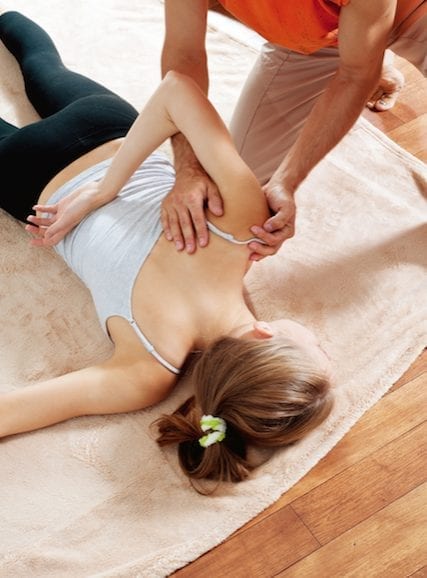Thai massage is an energetic, vigorous technique that involves stretching and deep tissue massage. Believed to have been created by Buddha’s physician and practiced for more than 2000 years, it is a healing technique that combines influences from China, India and other cultures from Southeast Asia. Because of strong influences from yoga techniques, Thai massage is also called Thai yoga, yoga massage, or assisted yoga. During Thai massage sessions, patients wear comfortable clothes, as no oils are required. The patient is passively moved from one stretching or yoga position to another while staying focused on relaxing and breathing. A Thai massage practitioner will always pay attention to the level of flexibility of each individual and adapt the stretching and pressure applied, so as to avoid muscular pain or injury.
How Thai massage canimprove flexibility
Thai massage is renowned as the best massage technique to progressively improve overall flexibility–specifically the flexibility of leg, back, and hip muscles. The scientific study conducted at the Chiang Mai University in Thailand and published in 2008 found a significant increase in the flexibility of the study group versus the control group. The results of the study also showed that Thai massage can lessen muscle stiffness and relieve tension more effectively than bed rest. Thai massage relieves muscle tension as well as reducing muscle fatigue through stretching movements, and increases joint mobility, not only by stimulating the body’s natural production of joint lubricants, but also by keeping the cartilage free of contaminating toxins.
Are you interested in becoming a certified massage therapist?
Visit the links below to explore our massage therapy programs at a campus near you:
The benefits of improved flexibility
Nearly everyone can benefit from improved flexibility as a way to reduce the long-term risk of accidental injury. It can also help keep you from becoming easily tired by physical activity, as your movements will require less energy. Increased flexibility can also reduce the risk of back pain and chronic orthopedic problems, as well as correcting bad posture and muscular imbalance.
Featured Posts:

